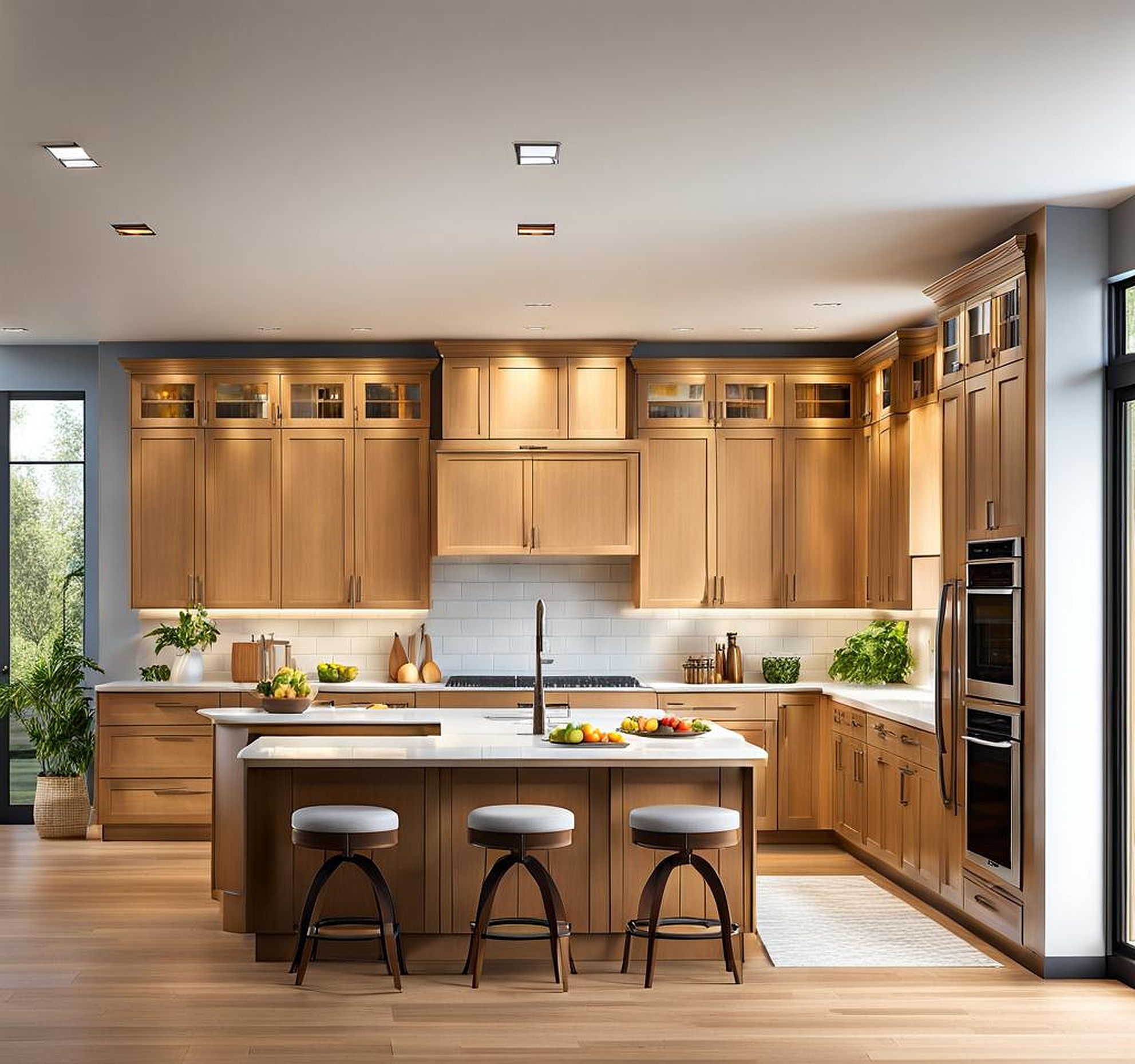Your kitchen cabinets all the way up to the ceiling add a touch of sophistication to your cooking area. This design choice has become increasingly popular, as homeowners seek to embrace both functionality and visual appeal. Whether you’re embarking on a kitchen renovation or simply exploring ways to refresh your existing space, kitchen cabinets up to the ceiling offer a captivating solution that seamlessly blends practicality with elegance.
The Allure of Kitchen Cabinets Up to the Ceiling
The allure of kitchen cabinets up to the ceiling lies in their ability to create a streamlined, cohesive aesthetic while simultaneously providing ample storage opportunities. By extending cabinetry to the ceiling, you eliminate the often-underutilized space above traditional cabinets, transforming it into a functional and visually appealing element. This design choice not only maximizes vertical space but also lends an air of grandeur and sophistication to your kitchen.
One of the most compelling benefits of ceiling-height cabinets is their capacity to make a room feel taller and more spacious. By drawing the eye upward, these cabinets create an illusion of heightened ceilings, instantly making the space feel more open and airy. This effect is particularly desirable in smaller kitchens, where every inch of space counts, or in rooms with lower ceilings, where the added vertical dimension can create a sense of expansiveness.

Planning and Considerations for Ceiling-Height Cabinets
Before diving into the world of ceiling-height cabinets, it’s crucial to assess the feasibility of this design choice based on your kitchen’s dimensions and existing layout. Measure the available ceiling height and consider any potential obstacles, such as sloped ceilings, windows, or ductwork, that may impact the installation process. Consulting with a professional designer or contractor can help you navigate these considerations and ensure a seamless integration of the cabinets into your space.
Another essential factor to consider is the overall proportion of the room. While ceiling-height cabinets can create a striking visual impact, they may not be suitable for every kitchen layout. In rooms with lower ceilings or smaller footprints, it’s essential to strike a balance between the vertical height of the cabinets and the overall flow and functionality of the space.
Design Options and Styles
Ceiling-height cabinets offer a canvas for endless design possibilities, allowing you to seamlessly blend form and function. From traditional and timeless to contemporary and sleek, the range of styles and finishes available ensures a perfect match for your aesthetic preferences.
For those drawn to the warmth and charm of traditional design, consider wood-stained cabinets with intricate detailing and decorative hardware. Alternatively, a clean, minimalist look with high-gloss finishes and recessed handles can create a modern and sophisticated ambiance. If you prefer the rustic charm of a farmhouse-inspired kitchen, explore distressed or weathered finishes paired with open shelving and vintage-inspired accents.
Beyond the cabinetry itself, consider incorporating creative elements such as glass doors, strategically placed lighting, or contrasting materials like stone or metal to add depth and visual interest to your ceiling-height cabinets.
Maximizing Storage and Organization
One of the primary advantages of installing kitchen cabinets up to the ceiling is the increased storage capacity they provide. With ample vertical space at your disposal, you can bid farewell to cluttered countertops and overflowing cabinets. However, maximizing this storage potential requires thoughtful planning and organization.
Consider incorporating pull-out shelves, lazy Susans, or custom inserts to make the most of the height and depth of your cabinets. These features not only enhance accessibility but also ensure that every nook and cranny is effectively utilized. Additionally, strategically placing frequently used items at eye level and less frequently accessed items higher up can streamline your cooking and meal preparation process.
To maintain organization and prevent a cluttered appearance, consider implementing a system that allows you to group and categorize items logically. This could involve designating specific cabinets for different purposes, such as baking supplies, cookware, or pantry items, or investing in clear storage containers and labels for easy identification.
Visual Impact and Illusion of Height
Ceiling-height cabinets possess an undeniable visual impact that can transform the entire ambiance of your kitchen. By seamlessly extending from floor to ceiling, these cabinets create a continuous line that draws the eye upward, enhancing the perceived height of the space. This effect is particularly striking in rooms with lower ceilings, as the vertical expanse of the cabinets can trick the eye into perceiving a taller, more spacious environment.
To further accentuate this illusion of height, consider incorporating light colors or reflective finishes on your cabinets. Lighter hues have a natural tendency to make a space feel airier and more open, while glossy or semi-gloss finishes can subtly reflect light, adding depth and dimension to the room. Conversely, darker colors or matte finishes may create a more cozy and intimate atmosphere, but they can also visually diminish the perceived height of the space.
While the benefits of ceiling-height cabinets are undeniable, it’s important to consider the potential challenges associated with maintaining and accessing these lofty storage spaces. Reaching the uppermost shelves can be a daunting task, particularly for those with mobility limitations or physical constraints.
To overcome this hurdle, consider investing in step stools, rolling ladders, or even motorized cabinets that can be lowered or raised with the touch of a button. Additionally, prioritizing the placement of frequently used items at lower levels can minimize the need for frequent access to the highest shelves.
Proper installation and adherence to safety protocols are also crucial when working with ceiling-height cabinets. Ensure that the cabinets are securely anchored to the walls and ceiling to prevent any potential accidents or damage. It’s advisable to enlist the services of a professional contractor or cabinetmaker to guarantee a safe and structurally sound installation.
With careful planning, thoughtful design choices, and attention to both aesthetics and functionality, kitchen cabinets up to the ceiling can truly elevate your cooking space, transforming it into a sophisticated and efficient haven that seamlessly blends style and practicality.